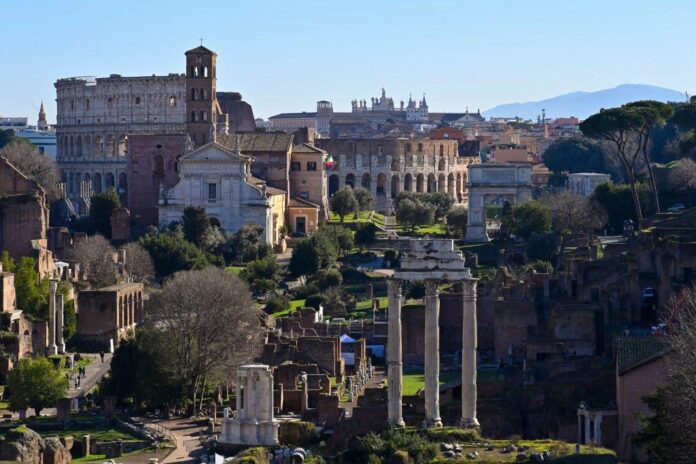Archaeologists exploring the complex drain system beneath the Colosseum in Rome have discovered ancient snack remnants, coins, and other relics that paint a human picture of what it was like to catch a matinee at the legendary arena.
Colosseum Archaeological Park Director Alfonsina Russo presented the cache at the Roman Forum’s Curia Julia senate house last Thursday, noting how it illustrates the “experience and habits of those who came to this place during the long days dedicated to the performances.” Artnet News has not yet received word whether the organization, which oversees the preservation of the site, will publish the study in any journals.
An unspecified team of archaeologists began exploring about 230 feet of drains and sewers beneath the Colosseum in January 2021. With navigation assistance from wire-guided robots, they intended to learn more about hydraulics systems that the Colosseum’s showrunners devised to flood its tunnels and produce water spectacles.
Completed after a decade of construction around 80 C.E., the Flavian Amphitheater ranks amongst the world’s most popular tourist attractions. This year, accountants valued the property at a colossal $79 billion.
A selection of fruit seeds, stones, & pits recovered from the drainage system of the Colosseum in #Rome, remains of the snacks eaten by #Roman spectators watching the games in the arena up to 1900 years ago #RomanArchaeology pic.twitter.com/qrSSRQUIYB
— Dr Jo Ball (@DrJEBall) July 2, 2022
While scouring the Colosseum’s sewers, the researchers inadvertently unearthed peach, fig, grape, blackberry, and cherry seeds—likely discarded beneath the grandstands as the venue’s average audience of 65,000 spectators snacked through shows.
Those guests also dropped bronze coins—53 of which were found during this latest exploration—dating back to Rome’s late Imperial period (250–450 C.E.). Archaeologists also discovered one rare orichalcum sestertius, a coin minted around 170–171 C.E. to honor the 10th anniversary of Marcus Aurelius’s rise to rule.
Bones from bears and big cats discovered during the search likely hail from animals forced to fight while guests chomped on their concessions. “Smaller animal bones belonging to dogs were also found,” the BBC added. The team even turned up some bone game dice, a pin made of bone, and clothing bits like shoe nails, leather, and studs.
Gladiators and bloodthirsty lions may dominate modern imaginations of the Colosseum’s heyday, but based on these findings, the lost and found was likely just as critical.
More Trending Stories:
The Class of 2022: Meet 6 Fast-Rising Artists Having Star Turns at This Year’s Art Basel Miami Beach
Click Here to See Our Latest Artnet Auctions, Live Now

























